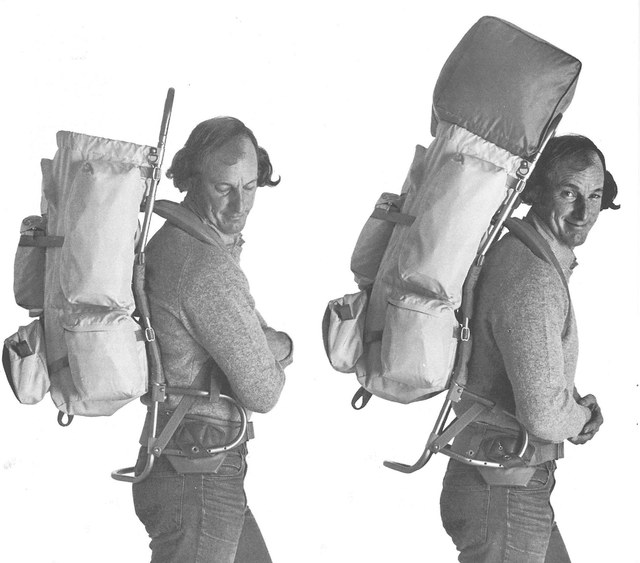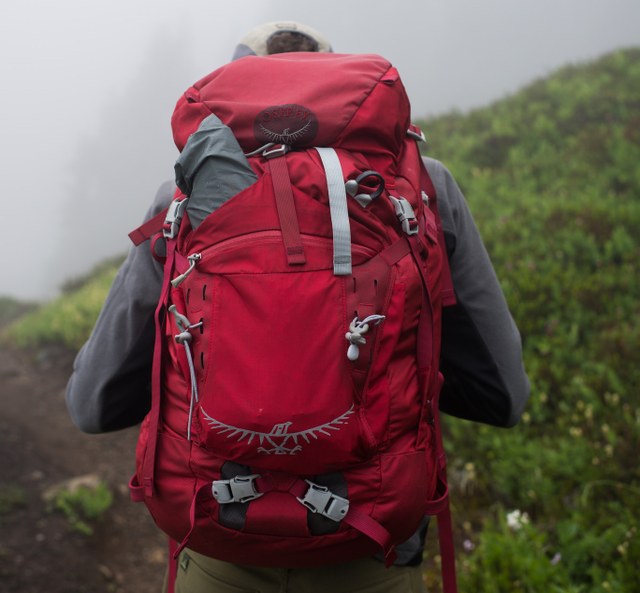Then and Now: Gear
A lot has changed in fabrics and materials since the 1960's. See how hiking gear has developed over the last 50 years.
Hiking gear runs the gamut from entry-level to the most technical of fabrics and designs created for all weather conditions. As hikers, our gear is important to us. Our boots take us to our favorite places, our backpacks hold our essentials, and our accessories and clothing make our trip more enjoyable and safe.
In the last 50 years, advancements in the way gear is designed and distributed have made hiking incredibly accessible. There are even programs that enable you to get your students and youth groups outside with free gear rentals, like WTA's Outdoor Leadership Training program.
With hiking's booming popularity, you can now walk into a local outdoor retailer and be faced with a vast array of choices, something unheard of in the 1960's. How we go about shopping for gear has also changed with the utilization of the internet and peer reviewing.
Then: the era of external frames and heavy loads
In the 1960's and 70's, the external frame pack reigned supreme and hikers had to think of creative ways to modify their packs and gear to suit their needs. It wasn't unheard of to fashion pockets and straps from scratch since many features (like external water bottle pockets) that are now commonplace were missing. Synthetic materials like Gore-Tex had yet to be invented (nylon was largely the fabric of choice), and waterproof jackets tended to be heavy and didn't breathe well. Even something as simple as an armpit zipper wasn't common until much later.

- Images from a Jansport advertisement in 1973 featured in the Signpost magazine showing the external pack styles of the time.
When it came to shopping and getting more info on a particular piece of gear it wasn't as easy as turning on the computer and looking to internet reviews. Instead, you had to write the company by mail requesting more information on the product you were interested in, or go into a store that carried it.
Now: ultralight and watertight
It's easy to become overwhelmed when you first walk into your local hiking outfitter. What fabrics are best? Do I need my backpack to be waterproof? What even is Gore-Tex? While it may seem daunting, we're in a much better place than the hikers who came before in terms of choice and finding exactly what you want.
With the advancement of various fabrics we've seen pack weight drastically decrease. Materials are no longer dense and heavy, and the size of items like stoves and cookware has shrunk considerably. We've also seen waterproofing come a long way in terms of breathability and weather resistance. Jackets can now handle the worst rain storms, bringing you through a heavy downpour dry and comfortable.

- Modern backpacks feature internal frames (a huge improvement over the external designs) as well as conveniently placed pockets and adjustment straps. Photo by Erika Haugen-Goodman.
There are accessory pockets, and pockets in the accessory pockets. There are straps for carrying gear efficiently and designs that save your back when you're carrying lots of weight. There are built in hydration reservoirs and pouches on belt straps. All of these things we take for granted now, but rewind the clock 50 years and they had never been heard of.
How we shop for hiking gear has also changed. Instead of walking into a store in 1960, trying on something, buying it and hoping it performs well, we now can read other hiker's reviews of the gear from the comfort of our own homes before we even set foot in a store. In fact, WTA puts out an annual Gear Guide that aims to help hikers make more informed decisions when purchasing outdoor gear.
While gear is getting better all the time, hiking is still just putting one foot in front of the other. You don't need the fanciest stuff to get out and enjoy a trail, but going prepared is important to make sure you have a safe and enjoyable time.
Read more about our history and anniversary at wta.org/50


Comments